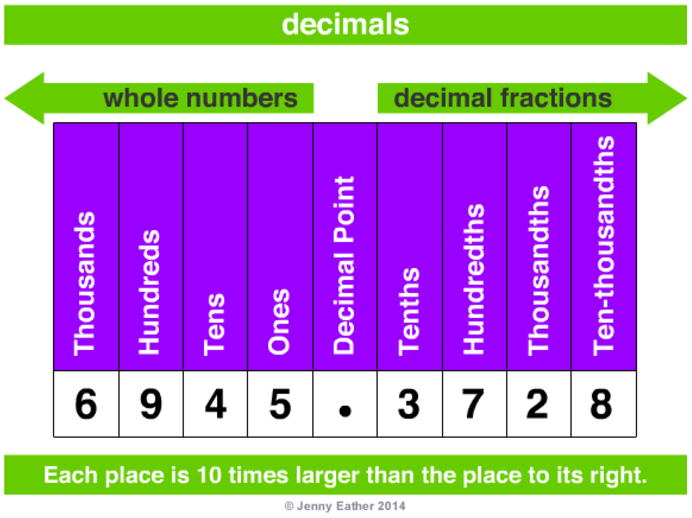Here is how a number is divided up...
So how do we identify large numbers?
The "trick" is to always group the digits in threes from right to left, starting with the smallest unit (ones).
Here's how it works:
- If the number has more than three digits, you add commas every three digits as you move left.
- If the number has three digits or fewer, there’s no need for commas since it’s already easy to read.
Examples:
-
123 → No comma needed, already 3 digits
- i.e. one hundred and twenty three.
- The 1 is 'hundreds', 2 is 'tens', 3 is 'ones'.
-
1,234 → Four digits, so we group into 1,234.
- i.e. one thousand, two hundred and thirty four.
- The 1 is 'thousands', 2 is 'hundreds', 3 is 'tens', 4 is 'ones'.
-
12,345 → Five digits, so we group into 12,345.
- i.e. twelve thousand, three hundred and fourty five.
- The 12 is 'thousands', 3 is 'hundreds', 4 is 'tens', 5 is 'ones'.
-
123,456 → Six digits, grouped as 123,456.
- i.e. one hound and twenty three thousand, four hundred and fifty six.
- The 123 is 'thousands', 4 is 'hundreds', 5 is 'tens', 6 is 'ones'.
-
1,234,567 → Seven digits, grouped as 1,234,567.
- i.e. one million, two hundred and thirty four thousand, five hundred and sixty seven.
- The 1 is 'millions', 234 is 'thousands', 5 is 'hundreds', 6 is 'tens', 7 is 'ones'.
